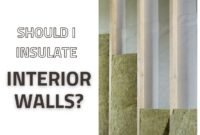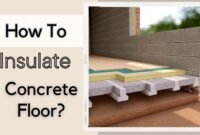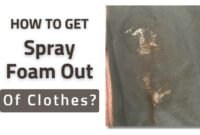Spray foam insulation, including closed-cell and open-cell foam, is a versatile liquid foam used extensively to insulate floors, ceilings, walls, and more. It seals off gaps and creates an effective air barrier, which is crucial for maintaining indoor air quality.
This air barrier is instrumental in building energy-efficient homes, significantly improving heating and cooling efficiency.
This air seal is crucial in maintaining indoor air quality and, by improving heating and cooling efficiency, contributes significantly to creating energy-efficient homes.
Despite its reputation for cost efficiency and its significant role in constructing energy-efficient homes, the disadvantages concern home builders and homeowners. These drawbacks must be carefully considered, particularly in terms of indoor air quality and long-term building integrity.
Home builders and homeowners alike must weigh these drawbacks against the benefits, especially when considering long-term impacts on indoor air quality and building integrity.
What Are the Disadvantages of Spray Foam Insulation?
As stated above, many people use spray foam insulation as it’s beneficial for energy efficiency, which can lead to lower energy bills. This type of insulation is often compared to fiberglass insulation in terms of cost and efficiency. Also, spray foam insulation installation costs you less than any other insulation.
Well, how can spray foam insulation be cheaper than the others? When, in fact, is the installation cost itself higher?
Spray foam installation can be applied to any surface, including crawl spaces, without losing shape. This flexibility makes it a popular choice among various insulation materials. This type of insulation will last longer without upgrading over time. Spray foam insulation is best for resisting any heat loss.
However, spray foam insulation’s disadvantages have been discussed more than its benefits. Indeed, spray foam is quite dangerous due to the materials inside, such as isocyanates and polyol resin.

These two chemicals are harmful as they are sprayed into the airspace and form an aerosol you breathe in. As a consequence, protective equipment is necessary when using the spray foam. The breathing irritation from these hazardous materials may vary depending on how much it’s inhaled.
5 Disadvantages of Spray Foam Insulation
- Health Risk
Using spray foam requires protective equipment and must be applied correctly. If you spray them too much, it allows you to inhale more hazardous aerosols. Those chemicals can cause long-term irritation from the skin to the respiratory system.
During my time working as a contractor, I observed firsthand the importance of proper ventilation and protective gear when applying spray foam insulation. In one instance, a colleague neglected to wear adequate respiratory protection, resulting in significant respiratory distress that required medical attention. This experience underscored the critical need for safety measures during installation.
- Damage Water in Your House
Spray foam insulation also poses a risk of water damage, especially in attics, where it can lead to roof damage. The insulation’s tendency to trap moisture can result in mold and mildew growth, compromising the indoor air’s health and the building’s structural integrity.
In attics, the foam can cause water to soak into the walls and roof, potentially compromising the structural integrity of the building.
“Improperly installed spray foam can trap moisture and create an environment ripe for mold. Ensuring proper ventilation during and after installation is key.”
- It’s Shrinking Over Time
Even though the spray foam is affordable and easy to use, this product will shrink over time. Typically, in extreme temperature changes area. Therefore, you need to reapply the spray foam insulation or maybe try to use another insulation.
Read also: How Long Does Spray Foam Insulation Last?
I have personally seen cases where spray foam insulation shrank significantly over a few years in homes located in areas with extreme temperature fluctuations. This shrinkage often led to gaps in insulation, reducing its effectiveness and requiring costly reapplications.
- Longer Time to Cure
Due to its hazardous chemical composition, spray foam insulation necessitates a longer curing time, often up to 24 hours. During this duration, the chemicals may emit harmful gases, contaminating the indoor air and posing significant health risks to the occupants. To mitigate these risks, homeowners and builders must ensure proper ventilation during this period.
Therefore, it’s crucial to allow adequate time for the insulation to cure fully to avoid exposure to these toxic gases.
“During the installation process, if a gap is missed in your attic it can increase the potential for water intrusions to occur in the environment. This can lead to rot and insect infestations and even the potential for mold to grow in the space.”
- Increases Global Warming
Spray foam insulation is frequently promoted as an eco-friendly choice, particularly for energy-efficient homes. However, while the materials in their composition enhance home insulation, they also contribute to global warming by depleting the ozone layer.
This paradoxical aspect of spray foam insulation presents a significant dilemma in its use for environmentally conscious building practices.
This paradoxical nature of spray foam insulation presents a dilemma, as it offers energy savings but at the potential cost of increased global warming risks.
Read also: Spray Foam Insulation For Metal Buildings
Last thoughts: Spray foam insulation offers a longer lifespan and fewer bills. It works well in insulating walls, floors, and roofs. Thanks to its efficiency, most homeowners and contractors choose spray foam insulation as an ideal solution to keeping the house warm.
| Disadvantages of Spray Foam Insulation | Solutions |
|---|---|
| Health risks during application | Ensure proper ventilation and protective equipment |
| High upfront cost | Evaluate long-term energy savings vs. initial investment |
| Installation complexity | Hire experienced professionals |
| Potential for mold growth | Ensure proper application and moisture control |
| Respiratory problems and off-gassing | Allow for proper curing time and check VOC levels |
| Long-term impact on the property | Consider how it affects home value and resale potential |
| Difficult to remove and replace | Understand the process and seek professional assistance |
| Compliance with building codes | Ensure that fire safety requirements are met |
Also, it’s low-maintenance, giving you peace of mind without worrying about a replacement or an upgrade. Besides, spray foam insulation is a winner for those concerned about eco-friendly products.
Despite that, you might want to consider the toxic compounds inside the spray foam insulation. If you already have respiratory system irritation, we bet you should use another type of insulation.
All in all, check if the spray foam insulation meets your needs and budget.
Read also: How to Get Foam Insulation Off Hands
This article provides a detailed explanation of spray foam insulation. Did you find it helpful?
Does it give you more confidence in using the spray foam insulation? We would love to know!


